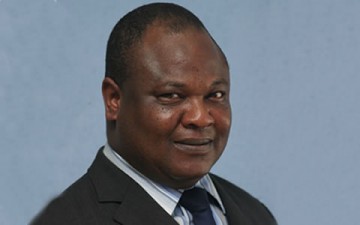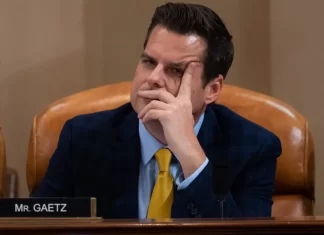1. Is Nigeria developing a single-term syndrome?
The appointment of a new Central Bank of Nigeria (CBN) governor from June 2014 to June 2019 brings the number appointed since May 29, 1999 to four, although only the last two were made after the 2007 CBN Act was signed into law on 28 May 2007.
Chief Executive Officer Economic Associates Ayo Teriba.
Joseph Sanusi (1999-2004) and Charles Soludo (2004-2009) were appointed by President Olusegun Obasanjo. Lamido Sanusi (2009-2014) was picked by President Umar Yar’adua and President Goodluck Jonathan chose Godwin Emefiele to man the CBN from 2014 to 2019.
We want to reflect on what lessons from the preceding three regimes can teach us about the next five years. The CBN Act allows a maximum two terms of five years each, but none of the three persons who have occupied the office so far has lasted that long.
Each tended to assume office with seemingly very high credibility only for it to be eroded before the end of the first five-year term. This raises a lot of questions: Is Nigeria developing a single-term syndrome? Or, why do Nigeria’s CBN governors find it so difficult to succeed?
Why do they end up failing so catastrophically? Why is it that Nigeria (specifically the president and the 109-member Senate) do not know how to appoint CBN governors who will be successful. Will Emefiele now break the jinx?
2. Sanusi’s tenure
Obasanjo dramatically named Sanusi CBN Governor as soon as he was sworn in as President on 29 May 1999, cutting short the tenure of Paul Ogwuma. Sanusi was then the Managing Director of First Bank, the largest commercial bank in the country at the time, and he was Deputy CBN Governor before that.
Events over the next four years were to expose Sanusi’s poor grasp of the main economic issues in Obasanjo’s first term.
Sanusi often relied on one of his Deputy Governors, Shamusudeen Usman, to answer the difficult economic questions, such as the depreciation of the naira and rises in inflation and interest rate.
These were coupled with Sanusi’s indecisive approach to the resolution of weak banks throughout his tenure, especially his infamous ‘life boat arrangement’ in which healthy banks were asked to lend to the not-so-healthy ones with CBN guarantee.
3. Soludo’s tenure
Obasanjo appointed Soludo a few weeks to the end of Sanusi’s tenure. Soludo had been Obasanjo’s Chief Economic Adviser in the 11 month period before his new appointment, and appeared to have been doing a good job of redefining medium term economic reform priorities and galvanising popular support for it nationwide.
He arrived the CBN with this favourable image, announced a gigantic bank consolidation project that forced the 89 banks in the country to merge into about 23, with too much emphasis on high equity base.
Just when the consolidation thing seemed to be working wonders, the global economic and financial meltdown and the stock market contraction of 2008 hit the banks hard, and it became widely suspected that the CBN under Soludo was not saying all that needed to be said about the true state of health of the banking system.
The CBN even opened an infamous ‘expanded discount window’ that enabled some illiquid banks easy access to CBN funds to paper up the cracks.
4. Sanusi’s tenure
Yar’adua named Sanusi, a highly reputed institutional risk management expert, who was then Managing Director of First Bank, as Soludo’s replacement. It was not long before Sanusi uncovered the Soludo regime had been papering over, to the applause of almost everyone.
However, the procedure adopted for the resolution of the crisis in some of the banks created grey areas the courts are still trying to resolve.
Lamido’s foray into an overly hawkish monetary policy activism one and a half years into his tenure seems largely responsible (sub-optimal oil price benchmarks on the fiscal side is also responsible) for the rise of unemployment from about 15 per cent when he took over in 2009 to about 30 per cent when he left office in 2014.
But he will prefer to be remembered for the reduction in the inflation from 15 per cent to 7.5 per cent.
5. Global economic and financial realities
Emefiele inherited a strong record of exchange rate and price stability, with high real growth from the Lamido regime, but he will have to worry about how to conduct monetary policy in a way that Nigeria’s superlative growth and stability will reduce unemployment.
Fortunately for Emefiele, the global economy and the global financial environment seems to have strongly recovered from the contractions that put the Soludo reforms to the test, and commodity prices have returned to the pre-crisis summit.
Also, global liquidity conditions have become sufficiently strong for the United States to start cutting down on its monthly asset repurchases.
Even the Nigerian stock market capitalisation has surpassed the pre-crisis peak of N12.5 trillion, and it is reasonable to expect that beyond the next quarter or two, external reserves should resume its pre-crisis path.
Emefiele’s tenure may see a repeat of the 2004-2007 situation, in which growing reserves will exert pressure on the naira to appreciate, accompanied by daily decline in the rate of inflation and interest rates.
He will have to be careful not to repeat the Soludo-era errors of misinterpreting global cyclical surges in commodity prices and liquidity as indication of the success of domestic policy reforms, and should not allow banks to get too exposed to commodity price and stock price ‘bubbles’.
Lamido had banned margin loans in his tenure but stock market operators have been quick to call on Emefiele to lift the ban.
While economic realities rarely warrant bans on risky but legitimate activities, Emefiele should seek to find the optimal size of margin lending and ways of insuring the lenders against the likelihood of an eventual cyclical contraction in the market.
6. Focusing monetary policy on the big picture
The biggest challenge is how to keep the good components of Lamido’s approach to monetary policy while overcoming weaknesses that became glaring in the last three years.
The proceedings of the Monetary Policy Committee (MPC) became more transparent in the Lamido era (communiques, accompanied with individual statements, and so on). That transparency is worth keeping.
The problem with the Lamido era was that beyond the transparency, the striking features of monetary policy deliberations were their lack of depth, breadth, or intellectual rigour.
Real activity crept out of the MPC deliberations, which became two narrowly focused on money flows between the CBN, banks and the government. The economy should first be about consumer spending before it is about business spending, and then government, banks, and finally the CBN.
7. Filling yawning economic data gaps
It seems the latest detailed spending and employment data available as Emefiele assumes office are for 2011. Meaning that availability of data required to gauge the supply side or demand side vulnerabilities to which monetary policy decisions must be sensitive cannot be taken for granted.
Demand-side weaknesses revealed from household or business spending data can help gain a clearer picture of the likely future path of output, inflation, or even employment than quarterly GDP figures can do.
Just as supply-side weaknesses revealed from employment and productivity data are vital for validating thinking about the underlying strength and sustainability of economic growth.
8. Economic policy management by non-economists as a risk factor
Emefiele is being made to lead a CBN board on which there is currently no economist, and an MPC on which only a couple of the part-time members are economists.
The technical expertise required for the CBN board and MPC to confront contemporary global economic and financial complexities and translate them to growth, employment, price, exchange rate and financial stability outcomes for Nigeria cannot be currently assumed to exist within the CBN.
Both the CBN board and MPC are populated by lawyers, accountants, bankers and/or stockbrokers. None has publicly articulated any aspect of monetary policy, and none has the technical capacity to do so now.
Emefiele’s vision statement of June 5, 2014 seems to show, he will likely waste the next couple of years trying to convince himself and us that he can learn economics on the job, that he understands what the issues are, and hopefully that he knows what actions to take.
• Teriba was a member of the National Economic Intelligence Committee (NEIC) from April 2009 to April 2012, where he conducted periodic reality checks on macroeconomic, fiscal and monetary developments in Nigeria.














